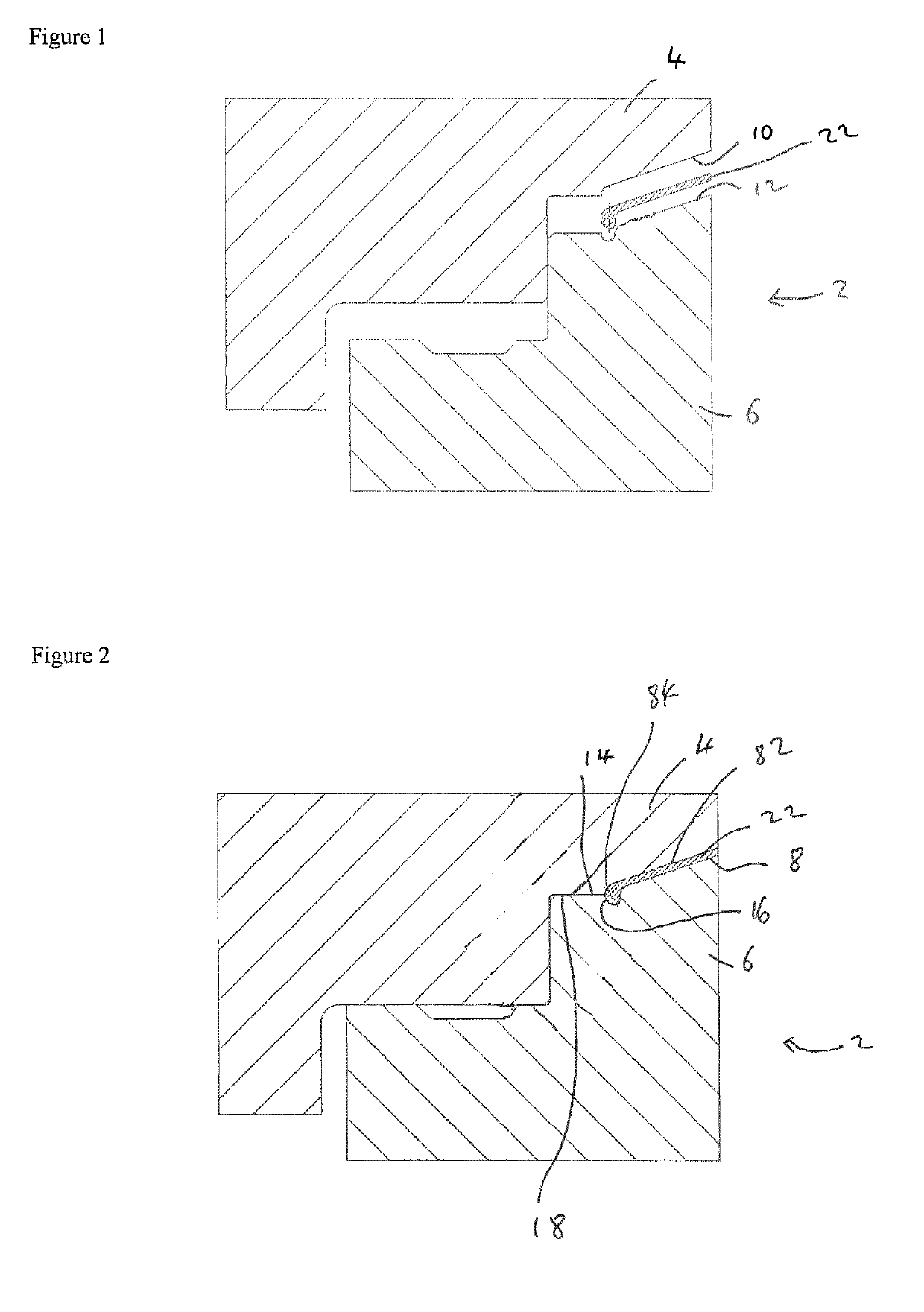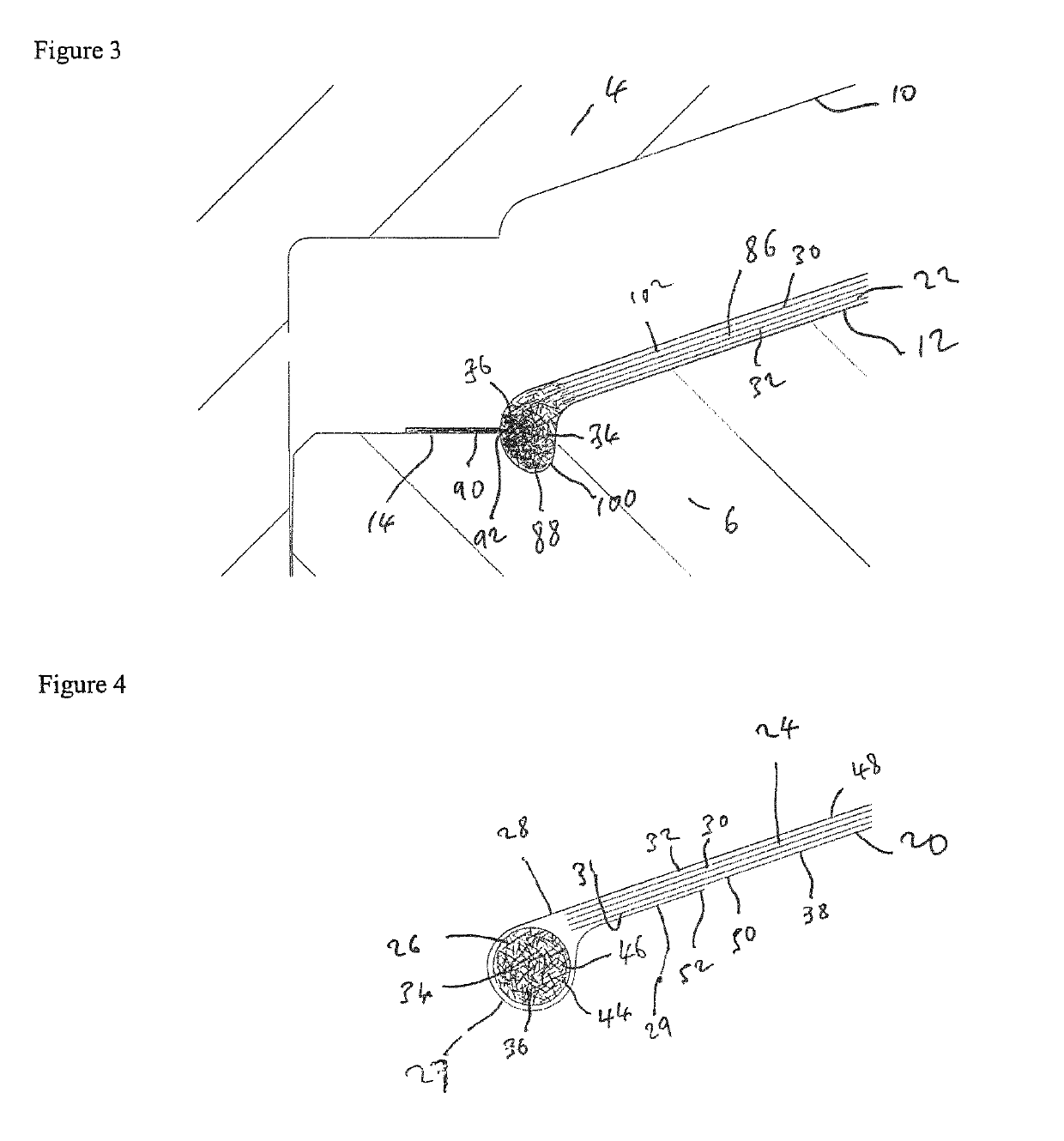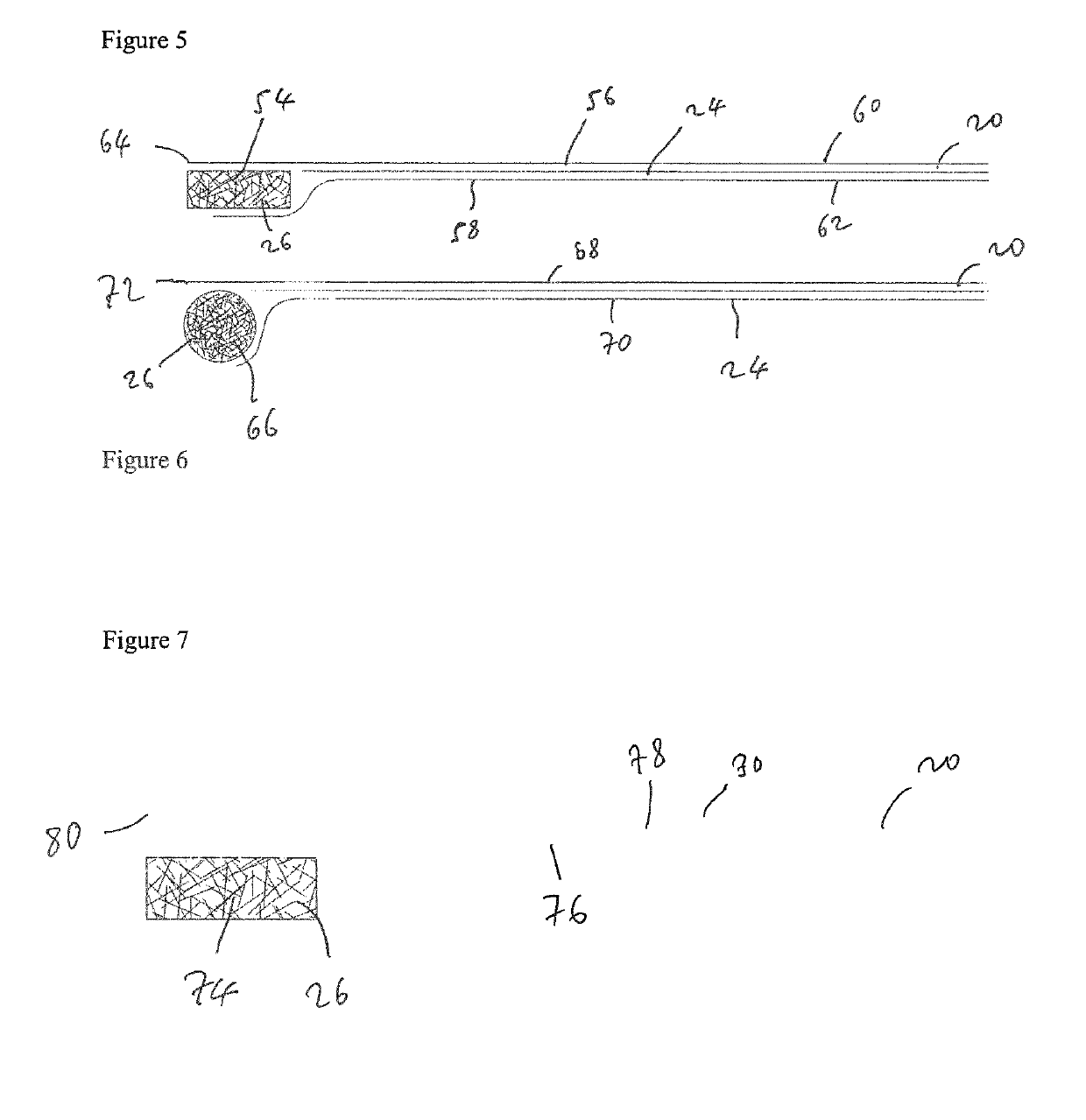Laminated Moulded Parts and Manufacture Thereof
a technology of laminated moulded parts and manufacturing methods, applied in the direction of layered products, etc., can solve the problems of poor finish in the final painted components, difficult control of the moulding process, and difficulty in producing press-moulded net shape moulded parts from composite materials, etc., to achieve fast cure, high quality, and high quality a-surface
- Summary
- Abstract
- Description
- Claims
- Application Information
AI Technical Summary
Benefits of technology
Problems solved by technology
Method used
Image
Examples
example 1
[0089]A cosmetic carbon fibre component having a stack as described below in Table 1 was provided to form a central layer portion of a moulding material.
TABLE 1PlyProduct Description1SF-160 300 gsm300 gsm surfacing epoxy resin (160° C. Tg)2 + 3ST160 / NMAT / HSC / 100 / 60%100 gsm non-woven needled carbon fibre madefrom recovered carbon fibre consisting of amixture of fibres between 10 and 150 mm inlength with 60 wt % epoxy resin (160° C. Tg)content as a single-sided non-impregnatedprepreg4ST160 / XC300C / 51%300 gsm non crimp stitched biaxial carbon fibrefabric with 51 wt % epoxy resin (160° C. Tg)content as a single-sided non-impregnatedprepreg5 + 6ST160 / NMAT / HSC / 100 / 60%100 gsm non-woven needled carbon fibre madefrom recovered carbon fibre consisting of amixture of fibres between 10 and 150 mm inlength with 60 wt % epoxy resin (160° C. Tg)content as a single-sided non-impregnatedprepreg7SF-160 300 gsm300 gsm surfacing epoxy resin (160° C. Tg)
[0090]An edge filler resin paste was prepared by di...
example 2
[0103]A test preform edge mould, and the cure process as in Example 1, were used but in combination with a modified moulding material having the structure and composition as shown in FIG. 6. Glass fibre fabric was employed rather than carbon fibre fabric. In this Example, a flat panel 240 was moulded and the central layer portion of the moulding material had substantially the same laminated construction as used for Example 1. The uppermost and lowermost fabric plies partially wrapped around the peripheral edge portion which comprised a rod of the edging paste comprising the short carbon fibres. The central ply was cut 2 mm shorter to accommodate the edging paste. The peripheral edge portion comprised the same edging paste, comprising epoxy resin, short carbon fibres, filler and pigment, as in Example 1.
[0104]FIG. 15 shows a micrograph, in both annotated and unannotated form, showing different regions in a cross section through the edge of a press moulded part 240 produced in accorda...
PUM
| Property | Measurement | Unit |
|---|---|---|
| Temperature | aaaaa | aaaaa |
| Length | aaaaa | aaaaa |
| Length | aaaaa | aaaaa |
Abstract
Description
Claims
Application Information
 Login to View More
Login to View More - R&D
- Intellectual Property
- Life Sciences
- Materials
- Tech Scout
- Unparalleled Data Quality
- Higher Quality Content
- 60% Fewer Hallucinations
Browse by: Latest US Patents, China's latest patents, Technical Efficacy Thesaurus, Application Domain, Technology Topic, Popular Technical Reports.
© 2025 PatSnap. All rights reserved.Legal|Privacy policy|Modern Slavery Act Transparency Statement|Sitemap|About US| Contact US: help@patsnap.com



